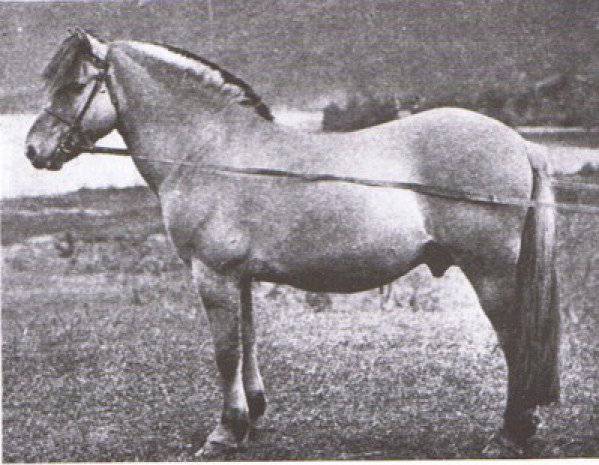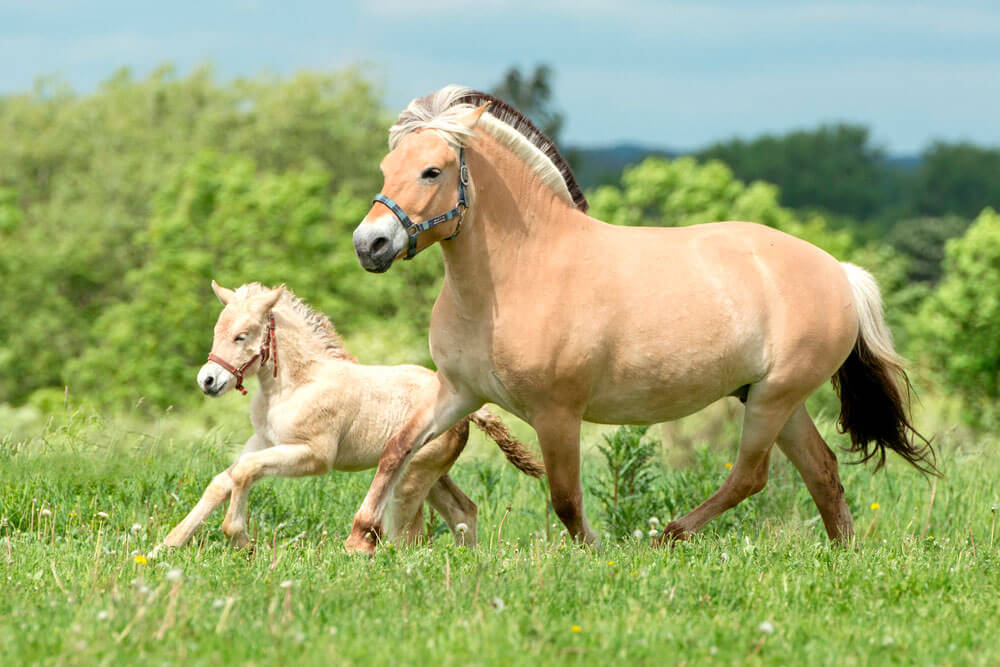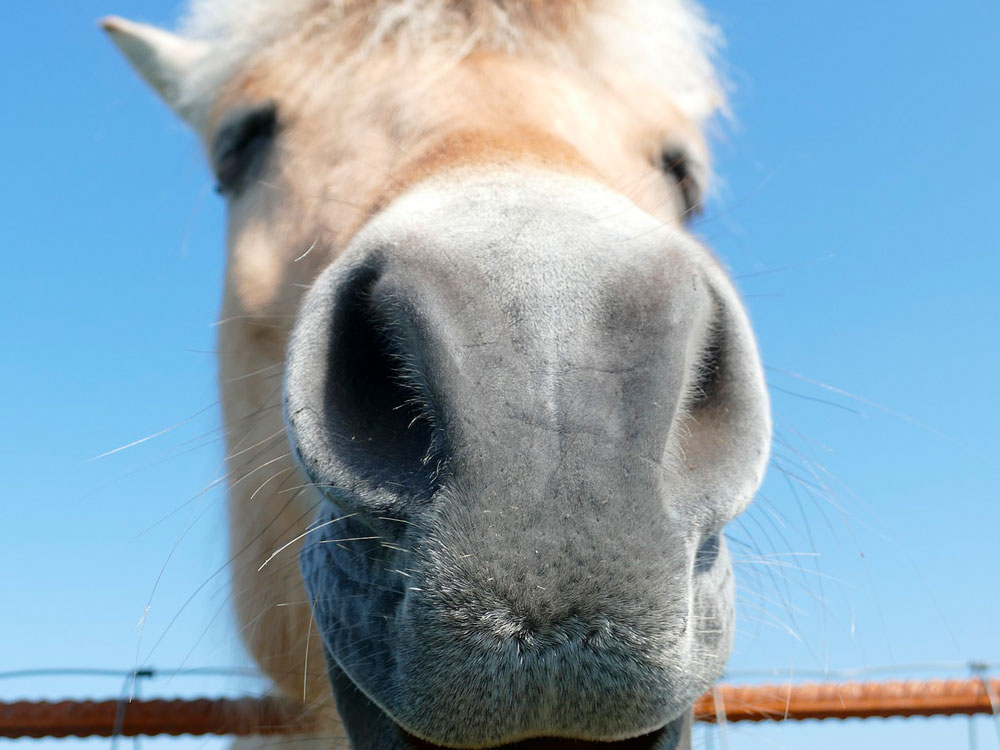
The Norwegian Fjord Horse is a small horse breed that is easy to recognize as Fjord Horses are brown dun color. The Fjord Horse, the Fjording, or the Fjord came from Western Norway. It is one of the world’s oldest and purest breeds known. And Fjord Horses are still very popular for their kind temperament. The price tag for Fjord typically ranges from $3,000 to $10,000.
Let’s get all the nuts and bolts about the Fjord breed.
What Is a Fjord Horse?
For over 4000 years, the Fjord Horse has been known as a hardy draft horse breed. The original Fjord horse was used for pulling and farm work. But now, they are popular in trail riding and driving. The breed features light color shades and having cut mane that stands up.
Fjord Horse History
Fjords are one of the oldest breeds in the world. They are believed to have a bond with the Przewalski Horse – the wild horse from Asia. The researchers claim the horse breed has existed since the last ice age. There are cave paintings exhibiting fighting stallions of the Fjord Horse ancestors.
The Norwegian Fjord Horse was domesticated around 4,000 years ago. Viking burial sites showed the Fjord Horse has been a war mount. The breed has been actively used as a farm animal as it’s hardy and durable. It also made a significant impact on the breeding of the Highland Pony and the Icelandic horse due to their similar conformations.
The pure breeding history has been recorded in the Norwegian Fjord Horse Registry. It was founded in the mid of the 20th century. The association aims to preserve the purity of the Norwegian Fjord Horse. The Norwegian Fjord Horse Registry has been selectively bred equines for over 2,000 years to keep the breed’s unique characteristics.
For more than three decades, the Canadian Fjord Horse Association (CFHA) has been protecting and fostering Fjord horses in Canada. Comprised of 500-plus members, CFHA is committed to safeguarding this one of the world’s oldest breeds.
The CFHA protects the Fjord Horse by advocating for accountable breeding practices and upholding a high standard of registration. Additionally, they provide educational events and workshops in order to broaden the horizon of members.

The Njål Horse
Njål, a pure Fjord stallion from Norway, was identified for his noteworthy breeding potential by Lori and Terry Brockway in 1992. Soon after, this purebred equine was imported to the United States that year to make a lasting impact on the worldwide population of Norwegian Fjord Horses. The pedigree of modern Fjords traces back to the Njål horse.
Njål established a solid reputation in the Fjord Horse community due to his remarkable brown dun color as well as for his even-tempered temperament. The equine exhibited excellence when it came to breeding. Most of his progeny inherited these same outstanding qualities from him.

Fjord Horse Temperament
The Norwegian Fjord Horse is loved for its friendly temperament. These are cold-blooded equines. Horses stand out with their gentle and calm behavior. They are not easily spooked animals, which is a plus.
Fjord Horses are willing to work and please their owner. They are great learners due to their high levels of intelligence. Horse trainers enjoy having time with such equines. As the contemporary Fjord Horse is a small breed with a calm tempo, it’s perfect for children.
Fjords are highly sociable animals. They will look for their owner’s attention. Such equines prefer daily communication with their peers. The horse can get bored quickly when being alone kept in a stall. Keep in mind the Fjord may express aggressiveness if it feels a lack of your attention.
Because of the breed’s gentle temperament, the Fjord Horse is often used as a service companion. The equine assists children and adults with disabilities. That’s a great family pet too. Your children will be entertained with such a horse for sure.

Fjord Horse Characteristics
The Norwegian Fjord Horse has distinctive features. The Fjord is a dun horse that is easy to distinguish from other horse breeds. The Fjord Horse is one of the oldest horse breeds that has been used in draft work, driving, and riding.
Norwegian horses have a small body with short limbs. The medium-sized head comes with a broad flat forehead and a slightly dished face. The arched neck and body are muscular. The ears are small, the eyes are big, and the forehead is flat. In winter, the hair coat becomes thick and heavy.
In fact, Fjord Horses have long hair that is thick and heavy. But it’s usually cut down to 1-2 inches long. So the hair stands up and replicates the shape of the muscular neck. The breed is distinguished by dark inner hair surrounded by white outer hair. Such a mane is easier to groom. Fjord Horses have feathering on their lower legs. But the breed standard doesn’t allow excessive feathering.
Despite the compact size, the breed is highly agile and capable of carrying heavy weight. It’s a great equine for farm work. It can be the best friend for your children too.
The Fjord Horse life expectancy is 30 years that makes them long-livers.
Both the Fjord and Tarpan horses feature 64 chromosomes. To compare, the Przewalski horse breed has 66 chromosomes.
Fjord Horse Height and Weight
The Fjord Horse is 13.1 to 14.3 hands tall at the withers. Even though the animal can be shorter than 14.2, it’s not referred to as a pony. The Fjord is a horse breed.
As for the Fjord Horse weight, the equine goes somewhere from 880 to 1,100 pounds. That’s an average weight for a horse breed.

Fjord Horse Colors
Fjord Horses are of a dun color. Dun horses typically have yellow hues of a coat as well as goldish, tannish tints are also presented. The tips of the ears are usually dark. Moreover, the mane and tail are black or brown. Sometimes these parts have light hairs that are called frosting.
Dun horses feature a dorsal stripe – a dark line on the horse’s back. Another distinctive feature is that Fjord Horses have zebra stripes on their legs. In other cases, the points of the legs are black. In addition, some dun horses may have shoulder striping or shadow as well. Besides, a cobwebbing may occur on the coat, which is dark rings or stripes on the forehead of the horse.
You may find Fjords with dark stripes over the withers as well. Red duns may have reddish stripes. While yellow and white duns can have dark or black stripes on the legs.
There’s a big array of color shades, including:
- the bay dun (which is called zebra dun),
- the red dun (having reddish tail and mane),
- and the blue dun (which is called grulla),
- the white dun (wich is called uls),
- the yellow dun (which is called gulblakk – the rarest dun gene),
- and the grey dun (which is called gråblakk – similar to the mouse dun color in other breeds).
Some Fjord Horses have brown primitive markings on their body. These are called Njal marks, after the foundation sire. Another feature is a pangare coat found in some equines. These are lighter hairs around the horse’s eyes, muzzle, belly, and inner legs.
You may face creme Fjord Horses that carry the cream gene. They result in occurring horses with lighter color shades.

The Cost of the Fjord Horse
The Fjord is usually considered moderate in cost, from $3,000 to $10,000, respectively. The price for a Fjord horse can vary based on age, training, pedigree, and health state.
Foals or yearlings come with an average price range from $1,500 to $5,000. If you’re looking for an older one with proper training and competition experience then that could cost you more. Generally ranging from $5,000 up to $15,000 or possibly even higher.

Fjord Horse Mane Cutting
Howrse owners like cutting the horse’s mane so it looks neat. As for the traditional cut, the mane must stand erect. There’s a convex form that follows the top line of the equine. The tradition traces back to the Vikings. History shows the Fjord Horses manes have been cut since that time. It was probably done to show the boldness of horses when they were used as war mounts. Perhaps, the short mane was a more comfortable option. The bridle was easily tacked up on a horse with short-standing hair.
To slay Fjord Horse mane cutting, use roaching. That’s a cutting technique that allows you to keep the black center hair longer, leaving a dramatic dark stripe. This is done when the white outer hair is trimmed slightly shorter. Cut the hairs leaving a few inches. It will regrow over time, so you can maintain it again. The point is to cut the white layers 2 inches lower than the black layer. To master the cuts, you need practice, practice, and more practice.

Fjord Horse Facts Revealed
The Fjord Horse breed is a tremendous equine that is versatile in use. Horse owners and breeders love the horse for its gentle traits and personality. Fjords are great companions for kids and adults. Their calm and outgoing behavior is beneficial for therapy sessions.
Norwegian Fjord Horses are powerful draft horses that are suitable for riding and driving. They’re used in farm work. Some equestrians perform with the Fjord Horse. It’s used in the tourist industry as well. Lots of activities fit the horse breed well.
